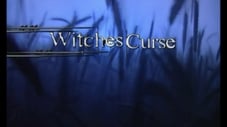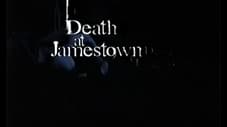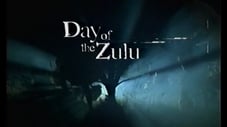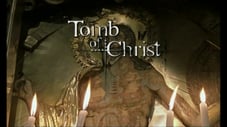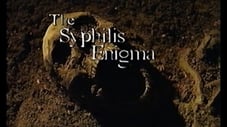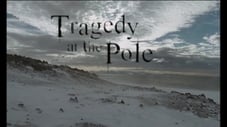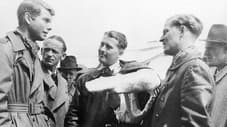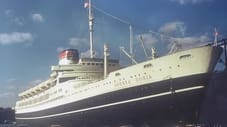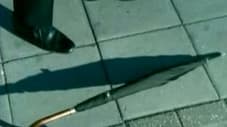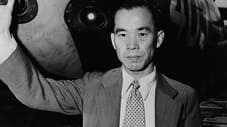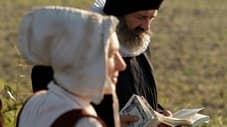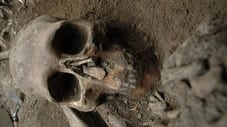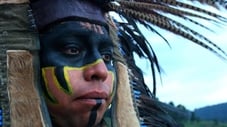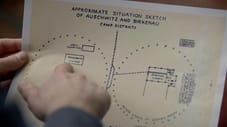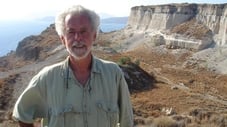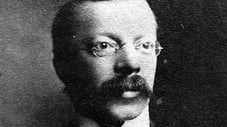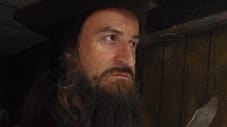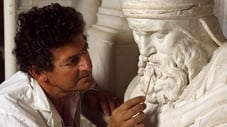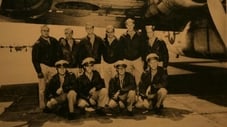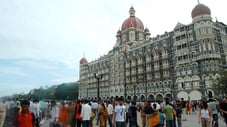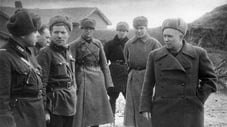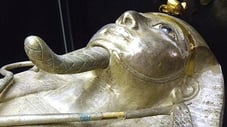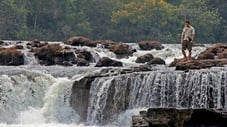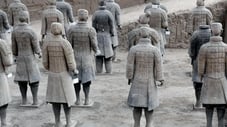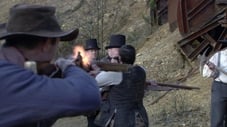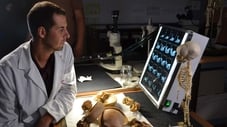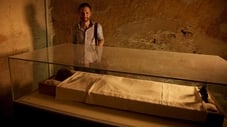Liev Schreiber as Narrator
Episodes 52
Search for the First Human
Explore the scientific mystery of human genesis through a close investigation of 13 fossils found in October 2000. The bones are the oldest hominid remains ever discovered — so old that they come from the time when the divergence of man and ape is thought to have occurred — and could be the blueprint for the first generation of the species that ultimately evolved into modern humans
Read MoreWitches Curse
(Disease & Disaster) “The Witches Curse” poses a shocking new idea about the violent convulsions, delirium, and strange skin sensations that struck a group of young girls in 17th-century Massachusetts and inspired the infamous Salem Witch Trials. In 1692, 19 of the town’s residents were put to death because they were believed to have been witches. For hundreds of years, this tragedy was blamed on religious fanaticism, adolescent cruelty, and contagious hysteria. But these explanations failed to satisfy a “detective” who embarked on her own fact-finding mission. Was Salem’s Puritan community unwittingly living on bread infected by the fungus from which LSD is derived? Could toxic amounts of this fungus, known as ergot, be the real reason the accusatory teens endured psychotic episodes and saw blood dripping down their walls at night? And what clues could the 2,300-year-old corpse of a Danish murder victim possibly hold for Salem investigators? Tracking down historic outbreaks of ergot poisoning, Dr. Caporael compares its symptoms to those that plagued the girls in Salem, revealing a whole new side of this unsettling period. (UK/PBS 55 min)
Read MoreMurder at Stonehenge
A mysterious skeleton buried in a shallow grave beneath a famous ancient monument. Who was he? How long had he been there? And why had his head been severed from its body? Archaeologist Mike Pitts works with scientists, forensics experts and historian to dig up ominous information about early Britain and the circumstances that surrounded the man's death. Was he a cattle thief, an insurgent, or a pagan sacrifice in a newly Christian world? (UK/PBS 55 min)
Read MoreDeath at Jamestown
The settlers at Jamestown, the first British colony in the New World, were looking for wealth and adventure. But within six months 80 of the original 100 arrivals were dead; 440 of the first 500 died within three years. Death came in sudden, brutal waves marked by severe bruising, weakness, wasting and madness. Did the men die of disease and starvation? Or is it more than a coincidence that the deadly outbreaks always seemed to strike just after the supply ships set sail? Clues from Europe and the recently rediscovered Jamestown site have led pathologist Frank Hancock to a radical new theory that implicates some unlikely suspects. (UK/PBS 55 min)
Read MoreDay of the Zulu
During the Anglo-Zulu wars in South Africa, the success of small British regiments against huge numbers of native warriors became the stuff of legend. But in one key 1879 battle, Zulu fighting unites known as Impis decimated the British forces at the battle of Isandlwana. Historian Ian Knight and forensic archaeologist Tony Pollard investigate the battle scene, trying to assess the impact of a solar eclipse on the outcome, and discovering the Zulu use of performance enhancing "battle drugs" that included cannabis and a powerful hallucinogenic mushroom. New evidence reveals the changing tide of the battle, the innovative strategy of the Zulu and one Critical, irreversible British mistake. (UK/PBS 55 min)
Read MoreTomb of Christ
For centuries, visitors to the Church of the Holy Seplulchre in Jerusalem believed that they stood within what was merely a symbolic representation of Jesus' burial place. But what if the edicule within the church, an ancient crumbling structure, really does house Christ's actual tomb? Oxford archaeologists Martin and Birthe Biddle reconstruct Jesus' final day and trace the history of the various incarnations of the edicule -- looking for evidence that there is a tomb present, and trying to decipher whether or not Christ actually lay there. (UK/PBS 55 min)
Read MoreThe Syphilis Enigma
In 1492, Christopher Columbus crossed the Atlantic in search of gold. But what his men carried back with them to Europe was something far less appealing. They brought the scourge of syphilis, a sexually transmitted disease never before seen in the Old World. At least that is what scientists have generally believed. But now, the discovery in Europe of a pre-Columbian body with definite signs of syphilis has archaeologist Charlotte Roberts convinced that syphilis existed in the Old World long before Columbus ever set sail. New evidence from across Europe is beginning to turn the prevailing Columbus theory on its head (UK/PBS 55 min)
Read MoreMystery of the Black Death
In 1665, a British tailor opened a flea-infested shipment of fabric from London. In a matter of days, the tailor and much of the village were suffering the telltale signs of bubonic plague, the disease that wiped out a third of the European population. 350 years later, an American geneticist is delving into the reasons why some managed to survive the Black Death while others were not so lucky.
Read MoreTitanic's Ghosts
In the aftermath of the Titanic, Canadian rescue ships recovered 328 bodies and buried dozens in unmarked graves. Today, scientific breakthroughs may help 3 families of missing passengers learn the true fate of their relatives.
Read MoreThe Great Fire of Rome
In 64 AD, Rome was the most magnificent city in the world. Then, in the early hours of July 19, fire broke out in the cook shops and cafés lining the Circus Maximus. Centuries later, questions linger. Was the fire an accident, or was it arson? Is Tacitus a reliable witness? Nero blamed the catastrophe on the Christians — is there any truth to his accusation?
Read MoreTragedy at the Pole
In March of 1912, a team of seasoned Antarctic explorers perished on their way back from the South Pole. Was it possible the explorers were blind-sided by conditions they could never have anticipated?
Read MoreBombing Nazi Dams
In the spring of 1943, Allied forces to begin preparations for a top secret Allied raid. Each aircraft carried a top-secret weapon -- a newly-invented bouncing bomb -- designed to shatter Germany's major dams.
Read MoreBlood Red Roses
The Battle of Towton in North Yorkshire, fought during the Wars of the Roses, was reputedly the bloodiest battle ever seen on English soil. In 1996 a mass grave of soldiers was discovered there by chance. This was the catalyst for a multi-disciplinary research project, still unique in Britain ten years after the initial discovery, which included a study of the skeletal remains, the battlefield landscape, the historical evidence and contemporary arms and armour. The discoveries were dramatic and moving; the individuals had clearly suffered traumatic deaths and subsequent research highlighted the often multiple wounds each individual had received before and, in some cases, after they had died. As well as the exciting forensic work the project also revealed much about medieval weaponry and fighting. Blood Red Roses contains all the information about this fascinating discovery, as well as discussing its wider historical, heritage and archaeological implications. (UK/PBS)
Read MoreBridge on the River Kwai
(Modern Mysteries) While remnants of the abandoned structure exist today, jungles have consumed much of what remains. Construction records and documents revealing the railway’s route are scarce. So just how did a team of men in such poor condition and confronted with so many obstacles manage to build the railway? And how did their Allied brethren achieve its demolition?
Read MoreKiller Flu
(Disease & Disaster) In 1918, a flu pandemic ripped through the global population with such speed and virulence that by the end of the following year an estimated 40 million people would be dead. Where did this come from and what made it so deadly? Virologists and epidemiologists the world over are still hunting down the answers.
Read MoreShroud of Christ?
In the summer of 2002, a team of textile restorers was invited to Turin to undertake an unprecedented renovation of the shroud, which called for the removal of the shroud's backing cloth and all of its medieval patches. The results were staggering -- brand new forensic evidence that the shroud is indeed 2,000 years old, dating from the time of Christ. Is it the authentic burial shroud of Jesus Christ, or just a brillian medieval fake?
Read MoreD-Day
In the three years leading up to D-Day, the Allies had assembled an array of weapons and transport vessels specially designed to overcome Hitler's defenses -- among them gliders, landing craft, minesweepers, and swimming tanks. This is the story of the maverick innovators who conceived of such an armory and its implementation into the largest amphibious invasion in the history of the world, and of the brave young men who woe;dd it so capably on the beach of Normandy. Runtime: 1:36.
Read MoreAmazon Warrior Women
(Archaeology) The myth of the Amazons, a tribe of bloodthirsty blond women thundering across arid battlefields to the horror of their male foes, has lingered for centuries. Their exploits seized the imagination of the Greek scribes Homer, Hippocrates, and Herodotus. But proof of their existence had always been lacking. Now, a 2,500-year-old mystery may have been solved, cracked by an American scientist whose ten-year odyssey led her tens of thousands of miles in pursuit of the truth. After unearthing evidence of a culture of ancient warrior women in the Russian steppes, Dr. Jeannine Davis-Kimball followed a trail of artifacts to a remote village in Western Mongolia, where her quest for a living link to a long-imagined tribe ended with a startling discovery. There, among the black-eyed Mongols, Davis-Kimball found a blond child, a 9-year-old girl named Meiramgul. Through DNA testing, Davis-Kimball finds that the DNA sequences of the warrior women and those from the girl of Mongolia are identical.
Read MoreThe Hunt for Nazi Scientists
Days after D-Day, Allied forces joined together for a different kind of mission. Through rare footage, eyewitness testimonies, and real-life accounts, the story is told of the race to capture the German physicists and other scientists and any secrets they may hold of advanced 'vengeance' weapons. Finding the scientists could mean gaining significant advantage in the looming Cold War.
Liev Schreiber narrates the story of the scientists' dramatic capture and the influences they have on wars today.
Read MoreGangland Graveyard
On October 6, 2004, FBI agents began digging up a Queens swamp in the hopes of finding the remains of the man who killed John Gotti's son. Instead, they unearthed a severed foot and other pieces of human skeleton, along with personal effects. Forensic tests tied the remains to Mob family captains who had been killed by mob boss Joseph "Big Joey" Massino. This program documents the search which opens a window into the grisly world of the mob.
Read MoreVoyage of the Courtesans
In 1789, over two hundred female convicts were pulled out of London's prisons and shipped off to Australia for a life of servitude. See how they took control of the situation to create a better life for themselves and the future of Australia.
Read MoreThe Sinking of the Andrea Doria
On the last night of an Atlantic voyage, the Andrea Doria luxury liner was broadsided by the 13,000-ton Stockholm in an accident that imperiled more than 1,700 passengers and crew. With the world watching in horror during one of the first televised tragedies, the Andrea Doria sank, sparking a ferocious debate over fault that remains to this day and ended the era of luxury cruise liners.
Read MoreUmbrella Assassin
On September 11, 1978, Bulgarian emigre, writer and broadcast journalist Georgi Markov died. Three days before, while waiting for a bus, Markov felt a sudden sting in the back of his thigh. Markov was soon hospitalized. After his death, an investigation ruled Markov had been poisoned. A pellet containing ricin had been shot into his leg. How had this political murder been executed?
Read MoreDogfight Over Guadalcanal
A pivotal moment in World War II, one of the most legendary and best documented dogfights in Air Force history is reconstructed.
Read MoreBattle for the Bible
The story behind the creation of the King James Bible from mysterious and inaccessible Latin texts to a book for the common english speaking people.
Read MoreHerculaneum Uncovered
On August 24th, A.D. 79, Mount Vesuvius erupted, burying the city of Herculaneum. This program documents the archaeological re-discovery of that ancient, well preserved city on the Bay of Naples.
Read MoreHeadless Romans
This documentary attempts to explain the mystery behind an unusual ancient burial site unearthed in England, and it's connection with a Roman Emperor.
Read MoreIrish Escape
A plea is smuggled to a New York reporter from within Western Australia's Fremantle Prison. This letter launched an American whaler that stood its ground against an armed British steamer for freedom and independence. The whaler was the Catalpa, its captain was George Anthony and its human cargo consisted of six Irish political prisoners, who had suffered at the Fremantle prison for a decade.
Read MoreAztec Massacre
A recent archaeological discovery of more than 550 bodies near Mexico City suggests that the Aztecs were much more resistant to the Spanish Conquistadors than previously thought.
Read MoreEscape from Auschwitz
The story of Rudolph Vrba and Alfred Wetzler, two young Slovak Jews who escaped the Auschwitz death camp. They immediately wrote a detailed account of their experiences resulting in thousands of lives being saved.
Read MoreDoping for Gold
In the 1970s, female East German athletes came from nowhere to dominate international sport. But behind their success lay a horrifying secret. Doping for Gold reveals the truth behind the biggest state-sponsored doping program the world has ever known, creating a timely perspective on today’s many sports drug scandals.
Read MoreSinking Atlantis
Five thousand years ago the Minoans, Europe’s first great civilization, flourished on the island of Crete. Yet in their heyday, they mysteriously disappeared. Sinking Atlantis digs deep into the Minoan soil and history, following archaeologists who are finding evidence of a massive tsunami that devastated the Minoans – and may have spawned the myth of Atlantis.
Read MoreExecuted in Error
In 1910, an American doctor named Hawley Crippen was convicted in England of poisoning and dismembering his wife. The vicious murder—and execution that followed—made international headlines. It was a landmark case: The first trial by media, and the first to be dominated by forensic science. But did the prosecutors get it right? Almost one hundred years later, investigators have re-opened the files on a murder that became known as one of the crimes of the century.
Read MoreBlackbeard's Lost Ship
Edward Teach, alias Blackbeard, was the most notorious pirate of his day. At the height of his rein, he commanded a fleet of four ships and a crew of 400 men. They were ruthless seafaring raiders who terrorizing vessels in American waters. In 1718, Blackbeard even blockaded the city of Charleston, crippling its economy. Eventually he was caught and beheaded by a posse from the Royal Navy. Now, 300 years later, a marine archaeology team believe they have found his sunken flagship, Queen Anne’s Revenge, off the North Carolina coast.
Read MoreMichelangelo Revealed
More than five centuries ago, Michelangelo Buonarroti was the darling of the Catholic Church. The Papacy commissioned him to create many of its most important pieces, including the frescoes of the Sistine Chapel. He spent his life glorifying the Church, etching Catholic ideals into masterpieces that defined religion for the masses. Yet when he died, his body was secretly shepherded off to Florence, and the Church was denied the opportunity to honor him with a grand funeral in Rome. Historians have long wondered about the mysterious circumstances surrounding his death, but now, art historian Antonio Forcellino believes he has pieced together evidence of a deep rift between the Church and the esteemed artist. The cause: Michelangelo’s belief in Protestant ideals, and his involvement with a clandestine fellowship trying to put an end to the decadence and corruption of the Clergy and reform the Church from within.
Read MoreAirmen and the Headhunters
A tribe in Borneo protects a shot-down U.S. bomber crew from Japanese occupiers during World War II. The local missionaries, who converted the tribe to Christianity, were executed by the Japanese invaders, who had forced out Dutch and British colonialists, while massacring Borneo natives. A surviving missionary from Indonesia, employed by the Japanese military as an area administrator, outwits Japanese forces by hiding the U.S. airmen deep in a jungle canyon. The local Dayak people risk their lives, and force the occupiers to abandon their hunt for the airmen, using blowpipes and machetes against the Japanese army search parties.
Read MoreMumbai Massacre
Accounts of the survivors of the indiscriminate terrorist massacres in Mumbai by Islamic Extremests in November 2008 and how the news media aided the terrorist by giving away the hiding places of the soon to be victims.
Read MoreJapanese SuperSub
During World War 2, Japan developed a super-submarine capable of launching bomber aircraft as a strategic weapon to carry the conflict to the United States mainland. But in the rapidly changing Pacific Theater, one intended mission after another becomes obsolete before the submarines can be deployed
Read MoreChurchill's Deadly Decision
Find out why Churchill chose to sink the French fleet.
Read MoreDeadliest Battle
The Battle of Stalingrad, the deadliest single battle ever seen, has been lauded as a shining example of Stalin's military genius, and altered the course of World War II permanently. The battle established the Soviet Union as a superpower to be reckoned with in the long Cold War that lay ahead. More than a half-century later, with newly uncovered evidence the full impact of this horrific battle is revealed.
Read MoreThe Silver Pharaoh
Tanis, Egypt, circa 1939. On the brink of World War II, an excavation team led by French archaeologist Pierre Montet unearthed an intact royal burial chamber containing treasures that rival the riches found in Tutankhamun’s tomb almost two decades before. But while the Tut discovery created an international sensation, the opening of the tomb in Tanis made barely a ripple in a world focused on impending war.
Read MoreSlave Ship Mutiny
Three disparate Capetowners reveal a long-forgotten, dramatic slave ship revolt en route from Madagascar to South Africa. About half of Cape Town's population are descendants of White, Asian, and Black slaves captured by the Dutch East Indies Company from all around the Indian Ocean. After the captives force the surviving crew below deck, a brave Malagasy warrior and a devious Dutch company agent fight a battle of wits with many surprising turns. For some aboard, the journey ends on infamous Robben Island, where Tokyo Sexwale and Nelson Mandela were later imprisoned.
Read MoreLost Ships of Rome
In 2009, archaeologists discovered an underwater graveyard of five Roman shipwrecks off the coast of Ventotene, a small Italian island with a notorious past. It was one of the biggest archaeological finds in recent history. The vessels’ well-preserved cargo indicates that these ships did not break up on the island’s rocks, but instead sank to the seabed intact and upright. They were laden with exotic goods including wine, olive oil, and the ancient delicacy garum; a condiment highly prized among ancient Romans. These sunken treasures are providing researchers with insight into the wreck, how the Romans lived, and Ventotene’s intriguing past.
Read MoreLost In The Amazon
On April 20, 1925, Colonel Percy Fawcett, his elder son Jack Fawcett and Jack’s lifelong friend, Raleigh Rimmell, departed from Cuiabá, the capital city of the Brazilian state of Mato Grosso, to find “Z” — Col. Fawcett’s name for what he believed to be an ancient city lost in the uncharted jungles of Brazil. The search for the mysterious Lost City of Z would be the great explorer’s last expedition. All three men would vanish without a trace.
Eighty-six years later, Secrets of the Dead has mounted a modern day quest with explorer Niall McCann to find the truth behind the disappearance of famed adventurer Col. Percy Fawcett and his party in Lost in the Amazon
Read MoreChina's Terracotta Warriors
The life-sized terracotta warriors of China are known throughout the world. This clay army of 8,000 including infantry, archers, generals and cavalry was discovered by archaeologists in 1974 after farmers digging a well near the Chinese city of Xian unearthed pieces of clay sculpted in human form.
An amazing archaeological find, the terracotta warriors date back more than two thousand years. But what was the purpose of this army of clay soldiers? Who ordered its construction? How were they created? Secrets of the Dead investigates the story behind China’s Terracotta Warriors and documents their return to former glory for the first time.
Read MoreThe World’s Biggest Bomb
Beginning in the 1950s, American and Soviet scientists embarked on a perilous race to see who could build and detonate the world’s largest bomb. The results exceeded all expectations about how big a bomb could be built. Initially, the Americans led the way, but then left the field clear for the Soviet Union to break all records.
Secrets of the Dead chronicles how the bomb-makers on both sides were working blind as they pushed science into unknown territory to build The World’s Biggest Bomb. As we approach the 50th anniversary of the detonation of the most powerful bomb ever constructed.
Read MoreThe Man Who Saved the World
An officer aboard a Soviet submarine refuses to fire a nuclear torpedo during the Cuban Missile Crisis in 1962.
Read MoreBugging Hitler's Soldiers
German POWs reveal inner thoughts about the Third Reich, including military secrets that helped the Allies win World War II.
Read MoreDeath on the Railroad
Forensic and scientific analysis help determine how 57 Irish immigrants died less than two months after arriving in Pennsylvania to work on the railroad.
Read MoreCavemen Cold Case
Scientists say some of the 49,000 year-old Neanderthal bones discovered in El Sidrón, Spain, bear signs of cannibalism.
Read MoreUltimate Tut
New scientific research provides insights into how King Tutankhamen was buried, why his tomb remained intact and how he died.
Read MoreBones of the Buddha
Bones of the Buddha is a 2013 television documentary produced by Icon Films and commissioned by WNET/THIRTEEN and ARTE France for the National Geographic Channels. It concerns a controversial Buddhist reliquary from the Piprahwa Stupa in Uttar Pradesh, India. It was released in May, 2013, and was broadcast in July 2013 in the US on PBS as part of the Secrets of the Dead series.
Read More

